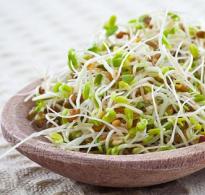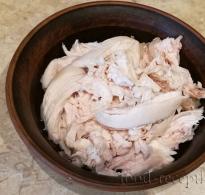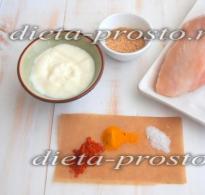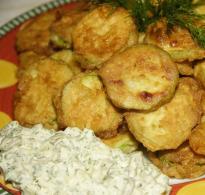How many calories in 100 grams of lentils. Calorie content of lentils and dietary properties
Lentils are a legume; represents the genus of the same name and belongs to the legume family.
Lentils are a very tasty and healthy product.This leguminous crop was grown for human consumption and as fodder many centuries ago.
A specific feature of the plant is that it does not absorb harmful compounds.
Composition
The calorie content and nutritional value of grains depend on the variety and cooking technology:
| Energy value, 100 gr. | Green and brown lentils raw | Green and brown lentils boiled | Raw red lentils | Red lentils boiled |
|---|---|---|---|---|
| Squirrels | 24.3 | 8.8g | 23.8 | 7.6g |
| Fats | 1.9g | 0.7g | 1.3g | 0.4g. |
| Carbohydrates | 48.8g | 16.9 | 56.3 | 16.5g |
| calories | 297 kcal | 105 kcal | 318 kcal | 100 kcal |
Is Lentil a Protein or a Carbohydrate? Lentils are a source of light protein and complex carbohydrates.
Lentils have a diverse chemical composition.
Grains in large quantities contain the following trace elements:
- potassium;
- phosphorus;
- magnesium;
- tryptophan amino acids;
- light vegetable protein;
- fatty acids Omega-3 and -6;
- vitamins gr. B (especially high content of B1), PP.
Sprouted grains, as the shoots grow, are enriched with vitamin C.  Sprouted lentils will compensate for the lack of vitamin C
Sprouted lentils will compensate for the lack of vitamin C
This valuable cereal is the leader in the content of folic acid: a serving of boiled beans provides the body with vitamin B9 by 90%.
For better absorption of iron, the product is served with fresh vegetables and herbs containing the antioxidant vitamin C.
Varieties
Lentils come in several varieties:
- brown- the most popular. In American cuisine, vegetable soups are prepared with herbs and this type of cereal. The brown variety of beans has a nutty flavor. Effective for lung diseases, various injuries and fractures;
- red- in the process of cooking it quickly becomes soft as it is devoid of a shell;
- black, similar to caviar "beluga";
- green French "puy"— grains of fragrant French lentils retain their integrity even after prolonged heat treatment. The puy variety is used to make salads. Yellow beans - this green variety, only peeled.
Red lentils, benefits and harms
Eating red lentils will benefit in the following cases:
- Red lentils contain a lot of iron, so they will useful for anemia anemia;
- Vitamin A does strong hair and nails, the condition of the skin and teeth is noticeably improved;
- vitamin E prevents aging;
- Dietary fiber acts as a regulator of metabolic processes, the body is filled with energy, stock that lasts for a long time.
A delicious soup is prepared from red lentils, you will learn the recipe from the video:
You may also be interested in learning about the benefits and harms. These are crushed barley seeds, which during processing are cleaned only from flower films, as a result of which they retain almost completely all the vitamins, microelements and fiber contained in the grains.
Green lentils, benefits and harms
Green groats boil for a long time, so it needs to be soaked.
Dishes from this variety of lentil beans:
- have a therapeutic effect constipation, diabetes due to the high content of fiber;
- green beans lower bad cholesterol levels;
- in combination with other means improve the condition with rheumatism, diseases of the liver and gastrointestinal tract, hypertension and etc.;
- Unripe green lentils are richest in tryptophan, which triggers serotonin production in organism.
The plant will also help produce serotonin. This is a real treasure trove of unique taste and powerful healing properties, it is useful for anyone to know how to use amaranth seeds.
Which lentils are healthier, red or green? Each variety has a whole range of important substances and compounds, but the best in all respects is the green variety of lentil beans.
 Green lentils are the healthiest
Green lentils are the healthiest Benefit
Lentils can help defeat some diseases:
- Soluble fiber improves the digestion process and prevents the development of tumors of the rectum;
- Dietary fiber in lentils improve cholesterol levels in blood;
- Regular inclusion of lentils in the menu has a beneficial effect on the state of immunity, the genitourinary system, improves metabolism in organism;
- Will help with constipation problem in the absence of intestinal inflammation;
- Lentils can also be used with diabetes. The product is filled with light carbohydrates that do not increase the percentage of sugar in the blood. It successfully replaces most cereals and bakery products for diabetics. The most useful for diabetes dished lentils. It should be eaten 2 rubles / week.
To solve the problem of constipation, you can use and. In addition, potato juice perfectly cleanses the body of toxins and fights against intoxications of various origins.
With diabetes, you can use and. Useful for diabetics is fresh vegetable juice, which improves overall well-being and helps prevent many complications of the disease.
Benefits and harms for the liver
Lentil grains, like all legumes, contain large amounts of lecithin acid. This substance has the ability to restore liver cells. The seeds of this lateral plant have a diuretic effect, prevent the accumulation of excess fluid, and promote the renewal of liver cells. Lentils are a storehouse of natural protein, practically devoid of fat. The product is extremely beneficial for the liver. Nutritionists recommend eating dishes from lentils 1-2 rubles / week.
You can prepare a decoction of lentils to cleanse the liver, you will learn the details from the video:
For women
Lentils contain isoflavones, which prevent the occurrence and development of malignant neoplasms in the breast. Preserved even in seeds that have undergone heat treatment.
For weight loss. This legume is rich in protein, which provides the body with energy for many hours and has virtually no fat. In addition to weight loss, the normal functioning of the body as a whole is being established. This natural product supports the body during diets, supplying it with all vital substances.
Lentil groats help to achieve the right balance of hormones, improve metabolic processes, which leads to natural weight loss.
Vitamin E has a beneficial effect on appearance, gives beauty "from the inside". Zinc gives the muscles flexibility, which is very important for a successful birth process without ruptures.
Is it possible for pregnant women? During pregnancy, it is important to consume the most valuable foods. Thanks to folic acid in the composition of cereals, lentils contribute to the proper development of the fetal brain, provide vitamins and other important substances to the body of the mother and the unborn baby.
When breastfeeding. Useful properties of lentils allow us to recommend this product for HB. You can include lentils in the menu of nursing mothers after the baby is 2 months old to avoid colic and other problems with the tummy.
It is also useful for young mothers to take. This tool not only increases the volume of milk during breastfeeding, but also helps the new mother to cope with postpartum depression.
For children
Lentils should be offered to children over 2 years of age. It is better if this legume is part of a multi-component dish and well boiled. The digestive system of a small organism is not yet perfect. For feeding children, it is best to use red, yellow and germinated cereals.  Children enjoy eating red lentil soup
Children enjoy eating red lentil soup
What is useful for men?
The use of lentils will bring invaluable benefits for men. The natural product helps to cleanse blood vessels, reduce "bad" cholesterol and prevent the development of heart diseases, which often affect the "stronger" sex.
Zinc in the composition of lentil beans restores male strength, and protein helps to effectively build muscle mass. Thanks to magnesium and potassium, the muscles become elastic.
For those who are engaged in bodybuilding, lentils are an important food. Groats contain vegetable protein that can be easily digested. Useful substances of lentil beans help keep muscles in good shape.
Lentils saturate the body with calories for a long time. It should be consumed before and after workouts.
Harm
Due to the presence of indigestible protein in the composition of lentils, its use may be contraindicated in people with:
- ulcers;
- gastritis;
- hepatitis;
- problems with the pancreas;
- gallbladder problems.
Lentils, like other legumes, stimulate the formation of gases, therefore, in addition to benefits, it can harm people with dysbacteriosis, intestinal diseases, and those who suffer from gout. To avoid these problems, legumes should be served with greens and eaten in small quantities.  In some cases, lentils should be used with caution.
In some cases, lentils should be used with caution.
It is difficult to digest by the body, so it should be boiled until soft over low heat and consumed in the daytime.
Also in the composition there are phytates, compounds that prevent the normal absorption of useful substances and minerals.
What is more useful?
Let's compare the benefits of lentils with other, more familiar representatives of legumes:
- Beans- a bright representative of legumes, has many varieties. All of them are similar in chemical composition, nutritional value. Beans are richest in potassium, phosphorus, vitamin B9, magnesium, calcium. Unlike lentils, beans contain the important trace element selenium. The content of protein and valuable dietary fiber in cultures is approximately the same. The calorie content of beans is slightly more than 100 Kcal / 100 g;
- Peas- also a representative of legumes. It has a richer composition of amino acids, however, it loses to lentils in terms of protein and iron content. Unlike lentils, it does not contain isoflavones.
As you can see, this bean is indispensable - be sure to try this wonderful product.
Similar content

Lentils are one of the oldest foods cultivated by man. It has a high content of substances useful for the body, is easily digested and quickly saturates. The low calorie content of lentils allows you to use it for fasting days and diet food.
Types of lentils
In cooking and nutrition, the following varieties are most often used:
- brown (or pardina). The most used variety. It has a taste of nuts and mushrooms, is used to prepare dietary first courses and casseroles;
- green (or French, puy). These are lentils at an early stage of maturity. When boiled, it retains its shape, so salads are prepared from it, as well as composite side dishes;
- red (or Egyptian). Shelled brown groats, without shell. Cooks quickly, cooks well. It is used for making porridge, mashed soups;
- black (beluga). It is considered the most refined (and expensive). Doesn't melt. Has a spicy aftertaste. Used in soups, side dishes, salads, stews.
Composition and properties

This cereal stands out among legumes with a high protein content - about 60%. Lentil protein is highly nutritious and easy to digest. Vegetarians use lentils as a complete substitute for meat. No less useful is vegetable fiber, which improves the functioning of the gastrointestinal tract. Lentils also contain a lot of iron, folic acid, thiamine.
The composition also includes other mineral components: potassium, calcium, magnesium, zinc, silicon, iodine, etc. In addition to folic acid (vitamin B9) and thiamine (B1), cereals contain other vitamins of this group, as well as A and PP. Vitamin C is found in high doses in sprouted grains. Nutritionists especially note the content of useful and important omega-3 and omega-6 acids.
According to nutritionists, lentils are useful for:
- diseases of the gastrointestinal tract (the combination of easily digestible protein and a complex of minerals improves metabolism, improves the functioning of the gastrointestinal tract);
- depression, nervous diseases (tryptophan contained in lentils helps in the production of serotonin, which improves mood);
- low hemoglobin level (croup saturates the body with iron);
- oncological diseases (due to the content of isoflavones);
- cardiovascular diseases (potassium and magnesium strengthen the heart muscle, protect against stroke);
- diabetes mellitus (lowers blood sugar levels due to "slow" carbohydrates).

Lentils are an indispensable component in dietary nutrition. Dishes based on it quickly saturate the body due to the large amount of fiber. "Slow" carbohydrates keep the feeling of satiety for a long time, controlling appetite. The low fat content eliminates the appearance of excess weight.
There are many recipes for lentil dishes - from soups to desserts, so even with a strict diet, you can eat varied. The low glycemic index allows it to be included in the diet of diabetic patients.
BJU lentils
| Variety | Nutritional value (g) | ||
| Squirrels | Fats | Carbohydrates | |
| brown | 24 | 1,5 | 43 |
| brown sprouted |
9 | 0,5 | 22 |
| Red | 22 | 1,1 | 48 |
| Green | 24 | 1,1 | 48 |
| Black | 24 | 1 | 54 |
Calories in raw lentils per 100 grams
| Variety | Calorie content (kcal) |
| brown | 284 |
| brown sprouted |
115 |
| Red | 314 |
| Green | 296 |
| Black | 323 |
Calorie boiled lentils per 100 grams
Lentils for weight loss
Lentils are popular with nutritionists, primarily because of their low calorie content. The fat content in the product is minimal, and boiling reduces it to almost zero. Vegetable fiber, which is rich in lentils, gives a feeling of satiety even with a small amount of food eaten, which eliminates overeating. In addition, fiber helps the normal functioning of the digestive system.
For the assimilation of vegetable protein, which is rich in lentils, the body spends energy, i.e. provides calorie consumption. The predominance of "slow" carbohydrates guarantees a long-lasting feeling of satiety. The rich vitamin and mineral composition ensures the intake of substances necessary for vital activity even with a limited diet.
Lentil diet is also convenient from a culinary point of view. There are many lentil dishes - soups, cereals, stews, salads, desserts, etc. As a rule, they are easy to prepare. Therefore, with a minimum investment of time, you can provide a varied menu for every taste, even with severe dietary restrictions.

In addition, lentil dishes are delicious both hot and cold, so it is convenient to take them with you if necessary, so as not to disturb the diet during a diet or on fasting days.
The effectiveness of the lentil diet is confirmed by nutritionists. It has been proven that eating only this product for a week guarantees weight loss of at least three kilograms. At the same time, there are no strict restrictions on portion sizes, i.e. losing weight does not feel hungry. But the course should last no more than 7 days.
You can replace lentil products not with the entire diet, but with one or two daily meals (but not breakfast). This regimen can be maintained for up to three months and periodically repeated.
Contraindications for use
The unconditional benefits of lentils do not negate caution when eating it for certain diseases.

These include :
- dysbacteriosis;
- dyskinesia of the gallbladder;
- flatulence;
- kidney problems;
- gout;
- joint diseases.
These diagnoses do not require a complete rejection of lentils. It is only necessary to reasonably limit portions, especially during an exacerbation of the disease. In this case, the unique properties of lentils will only benefit the body, and its low calorie content will help to avoid excess weight.
The calorie content of lentils boiled in water is, depending on the type of product, 100 - 120 kcal. Legumes contain:
- 7.8 g protein;
- 0 g fat;
- 20 g of carbohydrates.
The product is characterized by a rich vitamin and mineral composition, including folic acid, thiamine, pyridoxine, choline, vitamin PP, riboflavin. Lentils are recommended for replenishment in the body of boron, silicon, cobalt, molybdenum, nickel, phosphorus, etc.
In its raw form, the calorie content of red lentils per 100 grams is 314 kcal. The product contains 21 g of protein, 1.1 g of fat, 48 g of carbohydrates.
Boiled red lentils have a much lower calorie content. In 100 g of legumes boiled in water, no more than 100 kcal.
Green lentils calories per 100 grams
The calorie content of green lentils per 100 grams is 323 kcal. The product contains 25 g of proteins, 1.1 g of fats, 53 g of carbohydrates.
Calorie content of 100 g of boiled green lentils does not exceed 120 kcal.
The benefits of boiled lentils
The following benefits of boiled lentils are known:
- the product is saturated with easily digestible vegetable protein, due to which it is useful for normalizing the work of the digestive tract;
- lentils are considered one of the most effective plant sources of iron intake;
- lentil porridge is indicated to strengthen immunity;
- due to the saturation with antioxidants, the product is recommended for the prevention of colon and breast cancer;
- doctors recommend eating lentils to prevent diseases of the genitourinary system;
- due to the large amount of saturated fatty acids, dietary fiber, vegetable proteins and fats in lentils, legumes are an indispensable component of the diet of vegetarians;
- potassium in lentils is good for the health of the heart, blood vessels, nervous system.
Harm of boiled lentils
The harm of boiled lentils can manifest itself in the following cases:
- overeating with legumes with an increased tendency to constipation, flatulence;
- the use of the product for gout and exacerbated diseases of the joints;
- if you eat lentils with dysbacteriosis.
Lentils are indicated in very limited quantities in gallbladder dyskinesia.
Exceeding the daily intake of legumes contributes to the deterioration of the absorption of calcium, iron, zinc in the body.
In the modern world, it is becoming very fashionable to lead a healthy lifestyle. The main condition is proper and balanced nutrition. It is known that in this case it is important to consume as many different cereals as possible. Experts insist on the inclusion of lentils in the diet. In ancient times, it was she who was the main product for the population. Today it is customary to attribute lentils to an exotic species. The benefits of porridge are simply irreplaceable for the human body. But there are certain harms, like any other product. Therefore, this issue should be dealt with, taking into account all the indications and prohibitions on consumption.
Rich composition of lentils
All the benefits of this cereal are due to its amazing composition. Lentils are rich in trace elements and vitamins. Due to the high content of all necessary elements, lentils are important for vegetarians. Groats are recognized as a vegetable analogue of meat. Sprouted lentils have the maximum nutritional value.

So, cereals are famous for such components:
- Vitamins E, PP, B1, B2, A, carotene;
- Potassium;
- Calcium;
- Iron;
- Sodium;
- Magnesium;
- Silicon;
- Zinc;
- Phosphorus.
It is also worth noting that sprouted lentils contain 40% more amino acids than in ordinary beans of this crop. But, the calorie content of such products is quite high, therefore, cereals are not suitable as a diet food.
Varieties of lentils
The most popular are green and red lentils. It is worth noting that green lentils, unlike red ones, contain more fiber. It is this variety that is used in the treatment of diabetes and constipation. Green beans of this crop are recommended for people suffering from indigestion. But, it also takes the most time to prepare. First you need to soak the porridge, and then boil for about an hour and a half.
Lentil lovers note that the taste of green culture is much brighter than red or black. Often it is combined with other types of cereals: rice, barley, buckwheat. It is also great as a side dish for fish. In supermarkets, you can find the name of green beans, like French lentils.
The benefits of red lentils are high in iron. It is she who occupies a leading position in the content of this trace element. The maximum benefit is observed in patients with anemia. It is prepared quite quickly, within 20-30 minutes. This factor is due to the fact that the beans are not dressed in a hard skin. The second name of red lentils is Egyptian. Other varieties include the following:
- Brown;
- yellow;
- Black;
- Lentil Pardina.
The benefits of legumes
Among the many useful features of lentils, it can be noted that when grown, it does not absorb harmful toxic substances and nitrates. It is recommended to include beans in the diet of children after one year, because it contributes to the formation and strengthening of the body's immune system. As already mentioned, lentils are famous for their fiber content, which prevents the development of many diseases of the mammary glands and rectum.
The benefits of porridge are also observed for the genitourinary system. Experts advise regularly eating this cereal for men with sexual dysfunction. It improves blood flow and relieves possible inflammation. Improves sperm motility. The benefits for pregnant women are indispensable. Iron, which is part of lentils, prevents the development of anemia. It is important to use the product during menopause.
 A large amount of protein makes it possible to replace meat with lentils. This product is an excellent prevention of cardiovascular diseases and metabolic disorders in the body. It is safe to say that with regular consumption of lentils, blood pressure improves. With diabetes, it is recommended to eat this type of porridge twice a week. This helps to normalize blood sugar levels.
A large amount of protein makes it possible to replace meat with lentils. This product is an excellent prevention of cardiovascular diseases and metabolic disorders in the body. It is safe to say that with regular consumption of lentils, blood pressure improves. With diabetes, it is recommended to eat this type of porridge twice a week. This helps to normalize blood sugar levels.
Often these beans are included in the diet for various diseases of the gastrointestinal tract. The high content of potassium benefits health in arrhythmia and atherosclerosis. To summarize, the benefits of lentils are observed in such problems:
- Cardiovascular diseases;
- Anemia and other blood problems;
- sexual dysfunction;
- Diabetes;
- Problems of the gastrointestinal tract;
- Reduced immunity.
Harm of lentils
Like any other food product, lentils have their own harm and contraindications. So, with excessive consumption of it, digestive problems may occur due to the high protein content. Any legume is harmful to people suffering from increased gas formation. This culture is also contraindicated in various diseases of the joints (arthritis, arthrosis, gout).
 Physicians also refer dysbacteriosis to contraindications for use. Harm in this case will be observed in the form of stool disorders. A large amount of lentils affects the absorption of certain elements. So, calcium, zinc and potassium begin to be absorbed worse. Also, the product affects the functioning of the gallbladder. Porridge is high-calorie, so it is not suitable as a diet for weight loss. That's almost all the harm that is observed from this legume.
Physicians also refer dysbacteriosis to contraindications for use. Harm in this case will be observed in the form of stool disorders. A large amount of lentils affects the absorption of certain elements. So, calcium, zinc and potassium begin to be absorbed worse. Also, the product affects the functioning of the gallbladder. Porridge is high-calorie, so it is not suitable as a diet for weight loss. That's almost all the harm that is observed from this legume.
Chemical composition
| The nutritional value | In 100 g of product | vitamins | In 100 g of product | Micro and macro elements | In 100 g of product |
| Saturated fatty acids | 0.6 g | PP (Niacin) | 5.5 mg | Potassium | 672 mg |
| Starch | 43.4 g | E | 0.5 mg | Phosphorus | 390 mg |
| disaccharides | 2.9 g | BUT | 5 mcg | Calcium | 83 mg |
| Water | 14 g | IN 1 | 0.5 mg | Iron | 11.8 mg |
| Alimentary fiber | 11.5 g | IN 2 | 0.21 mg | Sodium | 55 mg |
| Squirrels | 24 g | AT 5 | 0.57 mg | Silicon | 80 mg |
| Carbohydrates | 46.3 g | AT 6 | 0.19 mg | Zinc | 2.42 mg |
| Fats | 1.5 g | FROM | 16.5 mg | Manganese | 1.19 mg |
| calories | 295 kcal | RR | 1.8 mg | Chlorine | 75 mg |
Lentils are little known to modern man. But nutritionists strongly recommend paying close attention to this culture - it is satisfying, healthy, rich in micro and macro elements, and also allows you to diversify your diet with dietary and tasty dishes. Read more about in a separate issue.
How many calories in lentils
Lentils are one of the first legumes to appear on the human table. Dishes from it are considered lean, but have good nutritional value.
Depending on the purpose and method of cooking, you can get crumbly grains with a denser texture for salads or meaty, ideal for processing into gravy or sauce.
Lentil Culture Recipes
Grains are easy and quick to prepare, while retaining a maximum of nutrients. First courses are cooked from the culture (stews, soups, national liquid puree soups), but it is also suitable for cooking second courses, cereals, roasts, meatballs and meatballs. Lentils go well in taste with all vegetables, many cereals and seasonings.
Lentil soup
- (1 large root vegetable);
- , peeled (1 medium head);
- (2.5 dessert spoons);
- lentils (200 g);
- water (one and a half glasses);
- black pepper (¼ teaspoon);
- ground;
- clove;
- salt (½ teaspoon).
The onion should be cut into cubes, grated carrots, and then sauté for 25 minutes over low heat in vegetable oil. It is advisable to do this immediately in a saucepan in which the soup will be cooked. Sort the lentils from bad grains, rinse and add to the vegetables, filling with water so that it covers the food with two fingers. Add minced garlic clove, salt, pepper and ground ginger. At will and taste, you can put your favorite spices and aromatic herbs. Cover the pan with a lid and cook for 30-35 minutes until the lentils boil. Homogenize the finished soup into a homogeneous mixture with a blender and garnish with chopped parsley before serving. The calorie content of the dish is 109 kcal / 100 g.
Lentil meatballs

- lentils (200 g);
- onion (5 heads);
- (100 ml);
- salt (½ teaspoon);
- pepper and other spices to taste;
- breadcrumbs (200 g).
Rinse red lentils in running water in advance and soak overnight, it should
and approximately double in size. Finely chop the onion and fry in vegetable oil until golden brown. Drain the lentils in a colander and mince with the fried onions, adding salt and spices. Mix the mixture well, form balls, roll them in breadcrumbs and fry the meatballs for 7-8 minutes on each side until cooked. Serve the dish with chopped herbs and a spoonful of sour cream. The calorie content of 100 g is 283 kcal.
Pilaf with lentils

- unpolished or brown (2.5 cups);
- carrots (2 small pieces);
- lentils (100 g);
- onion (1 large head);
- dark (50-55 g);
- olive oil (5 dessert spoons).
Lentils must first be soaked in cold water for several hours. Carrots and onions should be peeled, cut and fried in olive oil. Then transfer to a saucepan, add rice and swollen lentils, pour water so that it covers the food by three fingers, and simmer over low heat for 30-40 minutes. 10 minutes before readiness, pour washed raisins and spices to taste. The nutritional value of pilaf is 248 kcal/100 g.
Vegetable stew with lentils

- carrots (2 medium pieces);
- (3 root crops);
- (200 g);
- lentils (75 g);
- water (500 ml);
- , and salt (½ teaspoon each);
- mustard seeds (1 dessert spoon);
- (2 tablespoons).
Rinse the lentils, pour into a saucepan, add turmeric and, pouring water, cook for 30 minutes. Peel potatoes and carrots, cut into cubes, chop cabbage. In a preheated deep frying pan, fry the mustard seeds and cumin seeds for 2 minutes, add the carrots and fry for another 4 minutes. Put potatoes, cabbage, remaining spices and salt, close the lid and simmer for a quarter of an hour. Beat the boiled lentils with a blender, pour the resulting puree to the vegetables and simmer for another 15 minutes. Serve with rice or on its own. The energy value of the finished stew is 74 kcal / 100 g.
boiled lentils

- lentils (100 g);
- ground beef (150 g);
- (1 head);
- olive oil (10 ml);
- salt (½ teaspoon);
- ground black pepper;
- water (200 ml).
Boil the lentil. Cut the onion into cubes and fry in olive oil until golden brown, put the minced meat in the pan, salt and pepper. Fry the onion-beef mixture over medium heat for 15-20 minutes, then add a glass of water, put the boiled lentils and simmer the dish for another quarter of an hour. Serve with sour cream. The calorie content of one serving (100 g) is only 119 kcal.
nutritional value of beans
Lentils, like all legumes, are an excellent source of protein components, but, having a low glycemic index, lentils are a more efficient source of slow carbohydrates. A significant content of fiber, soluble and insoluble dietary fiber allows you to reduce the amount of calories consumed without hunger and discomfort.
% of the daily requirement indicated in the tables is an indicator indicating how many percent of the daily norm in the substance we will satisfy the body's needs by eating 100 grams of lentils.
Vitamins and useful elements in the composition of lentils
Up to 90% of folic acid was found in the grains of the culture, which is necessary for the proper assimilation of amino acids and the synthesis of DNA and RNA molecules, as well as the prevention of the development of cancer.
| Element | Content | %Daily Value |
| 360 mcg | 90 | |
| 0.5 mg | 33,4 | |






